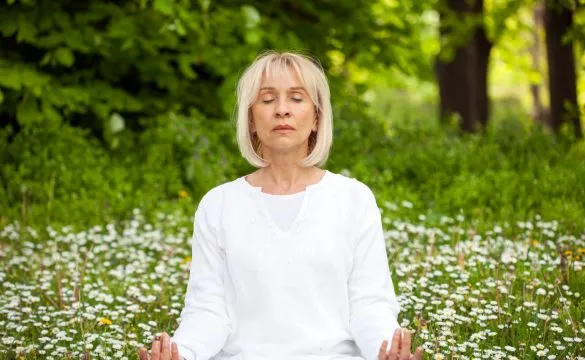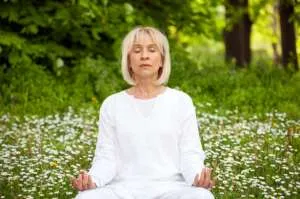
- Share on Facebook65
- Share on Pinterest
- Share on Twitter
Research shows that as many as 40 percent of adults over 60 report experiencing feelings of anxiety. And as many as 20 percent of seniors struggle with feelings of depression. While yoga has proven benefits for people of all ages, it has been shown to provide depression and anxiety relief to seniors in particular.
A review of two decades of studies
Researchers from the National University of Singapore performed a systematic review of 15 studies spanning two decades. These studies involved different methods for promoting relaxation, of which 12 were randomized controlled trials.
Six techniques were evaluated for their effectiveness in promoting relaxation: listening to music, yoga, massage therapy, tensing and relaxing different muscle groups, and stress management training.
Yoga was most effective and long lasting
Findings of the review showed yoga to be the most effective technique for alleviating depression. Other effective techniques for depression relief were music intervention, as well as muscle tensing and relaxing. Anxiety sufferers found the best relief from yoga and music interventions.
The positive effects of yoga were the most powerful overall. Even six months later elderly adults were benefiting from the breathing, stretching and meditation exercises.
“It could help counterbalance the negative effects of ageing, improve physical functioning, postpone disability, decrease morbidity and mortality, stimulate the mind, and increase hope, reducing the risk of anxiety and depression,” the authors wrote.
Many benefits for the elderly from practicing yoga
Yoga can provide many benefits for the elderly beyond depression relief, including healthy bones and flexibility.
“People can either find an individual teacher to work with when they first start out or find a studio that works with beginner classes, and see if they tailor to people over 50,” advises Eva Norlyk Smith, yoga teacher and managing editor at YogaUOnline, who was not involved with the study review.
 According to experts, maintaining a regular exercise habit can reduce the risk of death by one third and bring about a 40 percent decrease in the risk of chronic disease.
According to experts, maintaining a regular exercise habit can reduce the risk of death by one third and bring about a 40 percent decrease in the risk of chronic disease.
“Yoga helps people integrate an exercise program into their routine without some of the downfalls that you can easily come across in different training systems,” says Smith. “Yoga does offer strength training because you use the weight of your own body in many of the postures. But unlike regular strength training, because you’re not adding any weight, you’re less likely to get injured.”
Yoga has been proven to be safe for people with osteoporosis, as well as to slow down or prevent the loss of bone density.
“I know [yoga] can help because I’ve done the studies,” said Dr. Loren Fishman, medical director of Manhattan Physical Medicine, referring to a study of adults age 68. “We did a bone mineral density (DEXA) scan, then we taught half of them the yoga, waited two years, and did another scan. And not only did these people not lose bone, they gained bone. The ones who didn’t do the yoga lost a little bone, as you would expect.”
—The Alternative Daily
Sources:
http://www.tandfonline.com/doi/abs/10.1080/13607863.2014.997191?journalCode=camh20
http://time.com/3834499/yoga-elderly-depression
http://www.belmarrahealth.com/yoga-combats-depression-in-seniors
http://www.health.com/health/gallery/0,,20518814,00.html
- Share on Facebook65
- Share on Pinterest
- Share on Twitter

